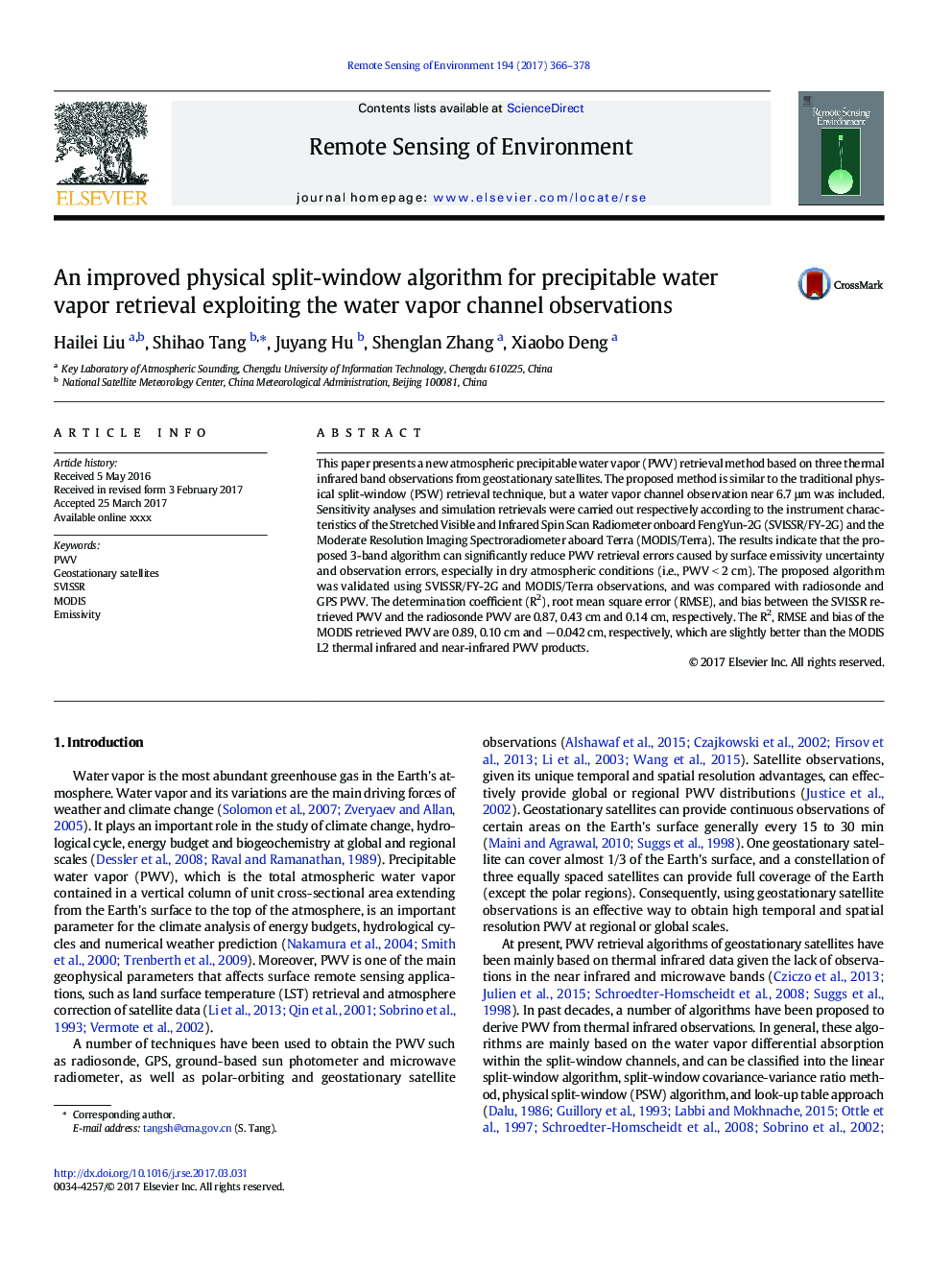| Article ID | Journal | Published Year | Pages | File Type |
|---|---|---|---|---|
| 5755013 | Remote Sensing of Environment | 2017 | 13 Pages |
Abstract
This paper presents a new atmospheric precipitable water vapor (PWV) retrieval method based on three thermal infrared band observations from geostationary satellites. The proposed method is similar to the traditional physical split-window (PSW) retrieval technique, but a water vapor channel observation near 6.7 μm was included. Sensitivity analyses and simulation retrievals were carried out respectively according to the instrument characteristics of the Stretched Visible and Infrared Spin Scan Radiometer onboard FengYun-2G (SVISSR/FY-2G) and the Moderate Resolution Imaging Spectroradiometer aboard Terra (MODIS/Terra). The results indicate that the proposed 3-band algorithm can significantly reduce PWV retrieval errors caused by surface emissivity uncertainty and observation errors, especially in dry atmospheric conditions (i.e., PWV < 2 cm). The proposed algorithm was validated using SVISSR/FY-2G and MODIS/Terra observations, and was compared with radiosonde and GPS PWV. The determination coefficient (R2), root mean square error (RMSE), and bias between the SVISSR retrieved PWV and the radiosonde PWV are 0.87, 0.43 cm and 0.14 cm, respectively. The R2, RMSE and bias of the MODIS retrieved PWV are 0.89, 0.10 cm and â 0.042 cm, respectively, which are slightly better than the MODIS L2 thermal infrared and near-infrared PWV products.
Related Topics
Physical Sciences and Engineering
Earth and Planetary Sciences
Computers in Earth Sciences
Authors
Hailei Liu, Shihao Tang, Juyang Hu, Shenglan Zhang, Xiaobo Deng,
